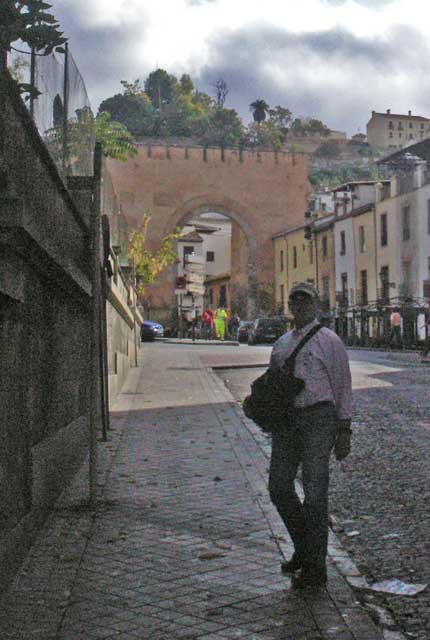
Jonathan with the Puerta de Elvira up the street.

We slept until about 1000. After having breakfast, and a shower preceding, we walked out of the hotel around noontime. We walked through the Puerta de Elvira into the Albayzín, the Moorish quarter. This area evokes a very unique feel – the streets are narrow and frequently stepped providing a very intimate feel to them. This area rises on the hillside facing the Alhambra. We walked lengthwise through the quarter, then reaching the Inglesia del Salvador, we walked downhill to the Rio Darro. We walked along the river passing a church where a wedding appeared to be wrapping up (Inglesia de San Pedro y San Pablo), where we crossed the river and worked our way around the base of the hill upon which the Alhambra sits. We followed the signs to the entry of the Alhambra where we pain our fee for the grounds only (5 each), but not the palace.
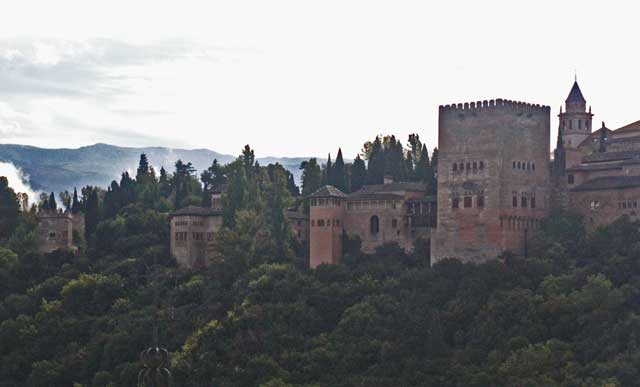
The Alhambra as seen from the Albayzín. The more spectacular pictures are taken from this quarter at sunset.
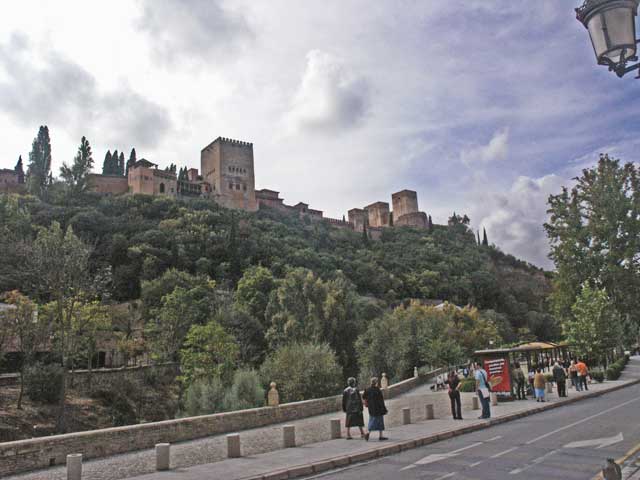
The Alhambra from the street at the foot of the Albayzín and Alhambra. The street runs along side the Rio Darro.
… A good example of how Spanish ecclesiastical architecture has been shaped by the Moorish influence. The tower design is based on a minaret, and the building materials are primarily brick and mortar.
We first explored the Generalife starting with the “New Gardens” – Jardines Nuevos – which have a very Italianate feel to them. From there we entered the Patio de la Acequia – Court of the Long Pool – a lovely courtyard with magnificent views of the Alhambra, Granada, and the lush plateau. From there the signs directed us to the Jardines Altos – the High Garden. Eventually the path took us along the upper side of the New Gardens and back to the Alhambra.
There is a tremendous amount of water used in the gardens of the Generalife – in fountains, pools, and rills. I found out after the fact that the Rio Darro was (is) diverted 11 miles upstream to provide the water! Quite an engineering feat.

There was a lot of this type of paving throughout Granada. Jonathan suggested calling it 'pebble parquetry.'
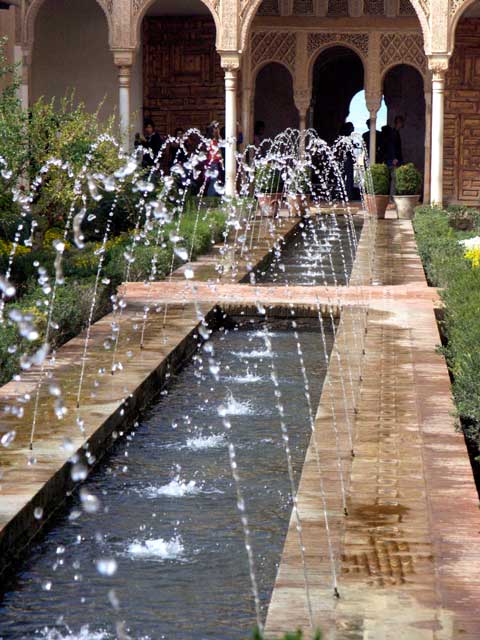
The fountains - which were added later - are noisy and not in keeping with Moorish garden aesthetics.
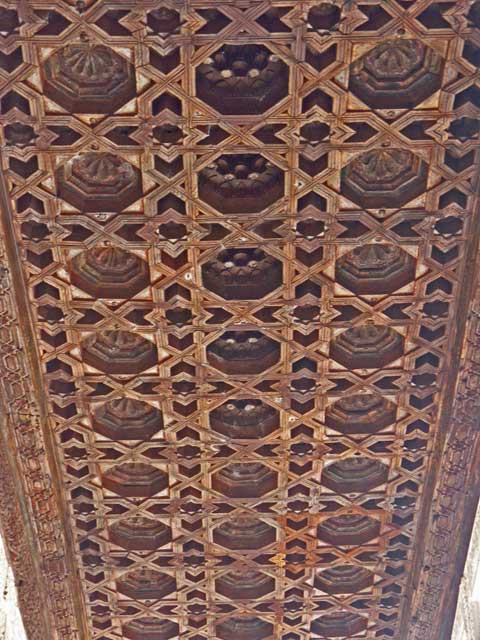
The woodworking was also finely worked as shown in the ceiling of the porch at the far end of the patio.
…The right half of them in this photo appear to be the result of restoration work. Also note the residual color (blue in this case) that was used to highlight the Arabic script in the lower portion of the picture. In its heyday, this work was very colorful.
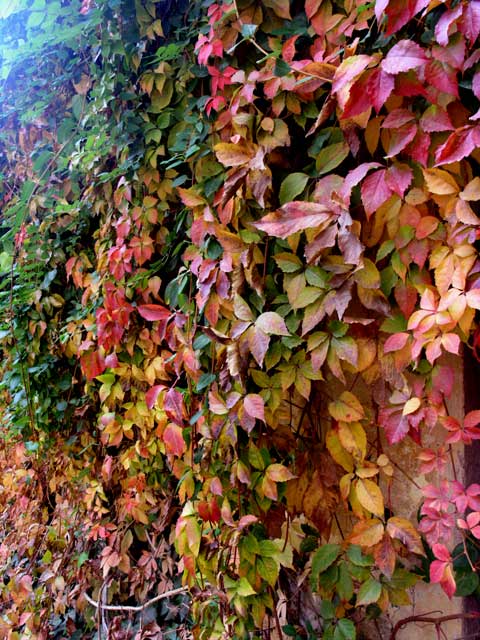
Virginia creeper, growing up the sides of the courtyard, was so colorful, I had to take a picture of it.
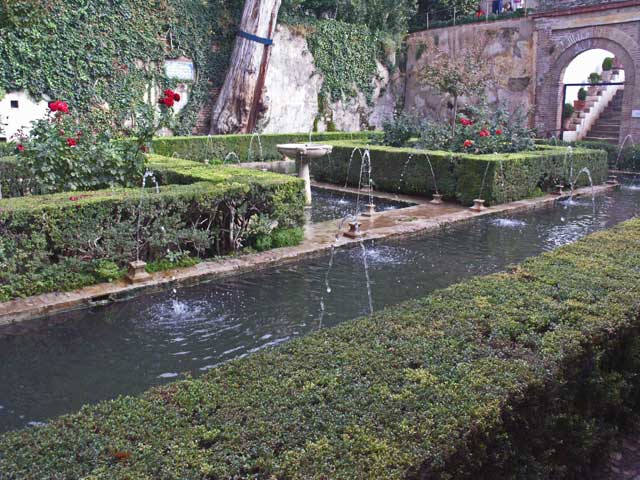
These 'updated' gardens don't really reflect the Islamic gardening style using fragrant plants - rosemary, thyme
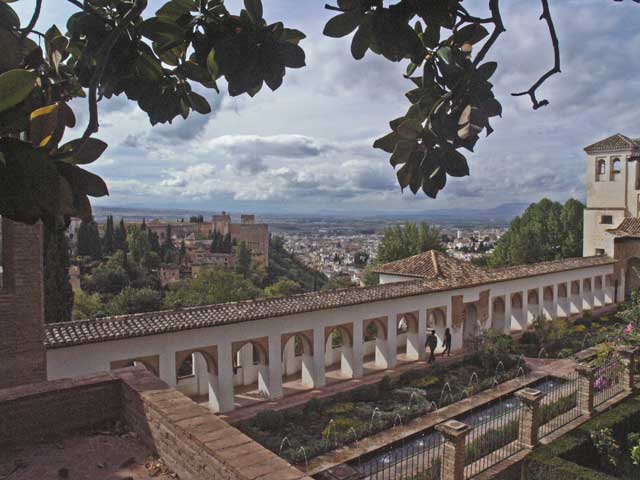
A view from the High Gardens overlooking the Patio de la Acequia, giving a good view of the colonnade.
From the Generalife, we entered the grounds of the fortress. Along the way, Jonathan realized he had lost his Country Walkers baseball cap, possibly at the ticket pavilion where we stopped to ask for information (and tickets).
The entry is on the southeast point of the complex, which runs from the southeast to the northwest and is shaped like the hull of a boat with the prow overlooking the city and plateau at the northwest point of the fortress. The complex is a little city unto itself.
There is a parador (i.e. state-sponsored hotel) on the grounds within the walls of the fortress. I had looked into getting our rooms there as opposed to the Palacio de Santa Paula, but Belen, our agent at Totally Spain, recommended the Palacio as the only room available was overlooked the car park. I also think the Palacio served us better in terms of being more centrally located.
There are numerous other buildings that were added after the fall of Granada in 1492. Certain touches were added to emphasize the new ownership. At the far northwest corner of the fort, which commands the view of the city and the vega, was the original fortification called the Alcazaba. The only addition by the Christian conquerors was belfry on the highest tower with a cross on the top. The flags of Spain, the European Union, and other local flags are a recent addition.
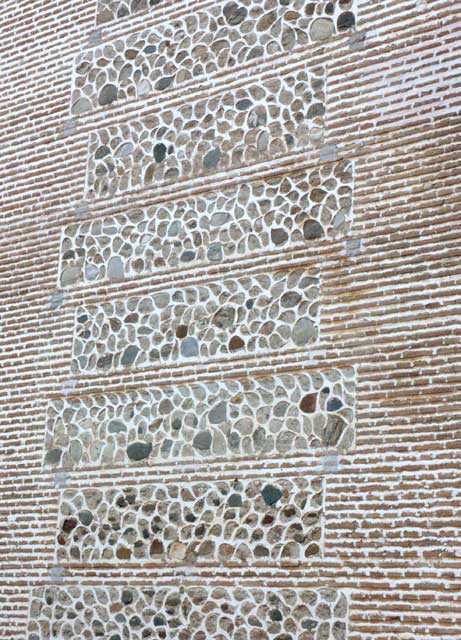
Some interesting patterns in the brick and stonework on the side of the chuch (I think it was the church).
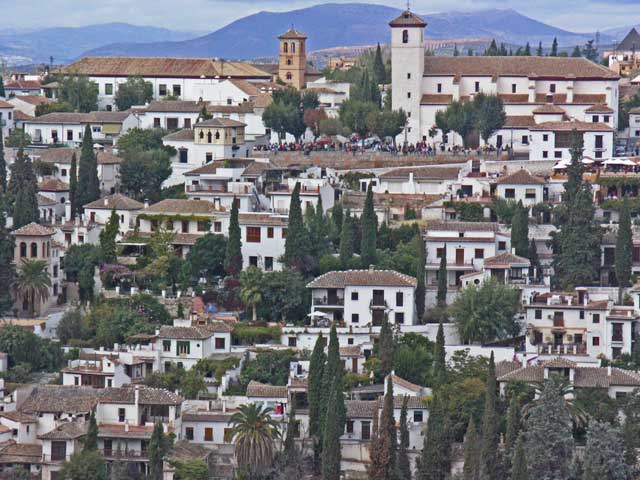
The plaza with all the people is the vantage point folks use to take pictures of the Alhmabra at sunset and at night.
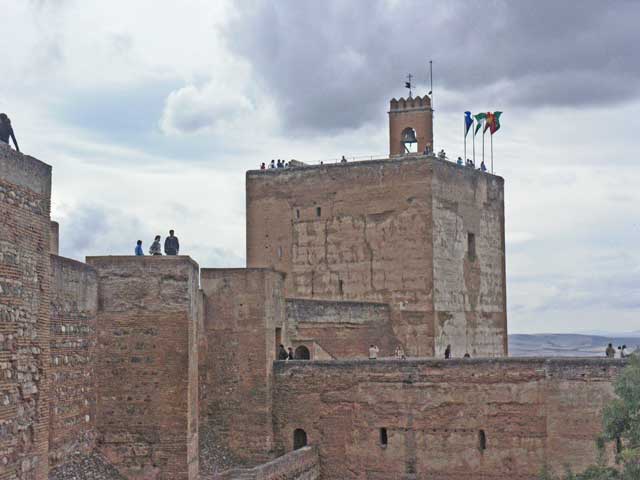
The main tower of the Alcazaba with the belfry added after the Reconquest just to the left of the flags.
We retraced our steps through the citadel to the entry and walked down the path that most people use to walk up to the site. (We found Jonathan’s cap at the ticket pavilion, where someone had hung it on a sign post just inside.) This route took us by the Puerta de la Justica (which was closed off, although there was a small door there) and through the Puerta de los Granados – the Pomegranate Gate. Coming down the street I spotted where we had made a “wrong turn” earlier. We had turned up this street earlier, but decided we hadn’t gone far enough around the base of the hill, and so we had retraced our steps back down the street and continued on a wide swing around the hill.
From there we walked back to the hotel looking for a place for lunch although it was about 1700 and most places were closed. So we went back to our room and had a couple of beers out of the minibar (which was gratis – a new experience for us), wrote in our diaries, and took a nap.
We went looking for dinner around 2000, first checking to see if we could get into a seafood restaurant Nick, our Country Walkers guide, had recommended in an email. The restaurant, Cuinini, was booked solid, so the hotel staff suggested we go to the bar there for tapas. We found the place and even the bar looked jammed, so we wandered about the area which seemed to have a goodly number of restaurants to choose from. We ended up at the Centro de Granada restaurant on a square we later learned was called Plaza Bib-Rambla. We were seated outside (it was now approaching 2100) at the only available table that had just been cleared. I ordered leg of lamb, while Jonathan had pork cutlet – nothing special about either selection. The appetizers were more interesting. I had onions in balsamic vinegar and Jonathan had “Iberico sausage.” The brochure we picked up from the restaurant after the meal suggests “starting your meal by trying … some exquisite cured sausage, produced in Granada using traditional methods – the most discerning palates should try the “Iberico” sausage, from pigs raised on a diet of acorns in Sierra de Aracena.” I had commented earlier that the sausage had the consistency of congealed fat, little taste, or seasoning, before learning that I was maligning a local delicacy. Oops! So much for my palate! We walked back to the hotel and hit the sack around midnight.
